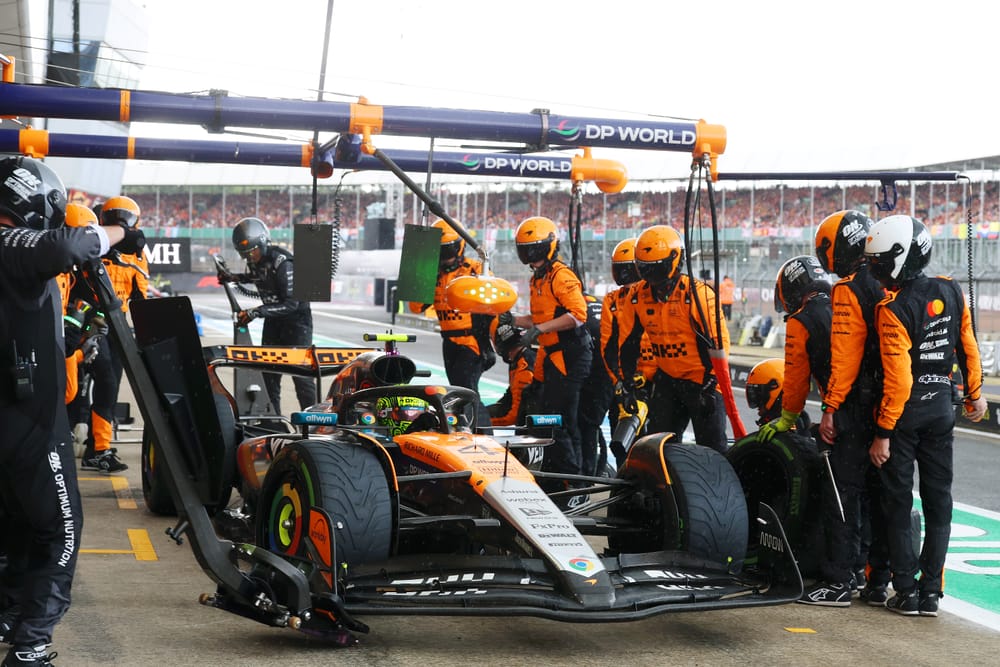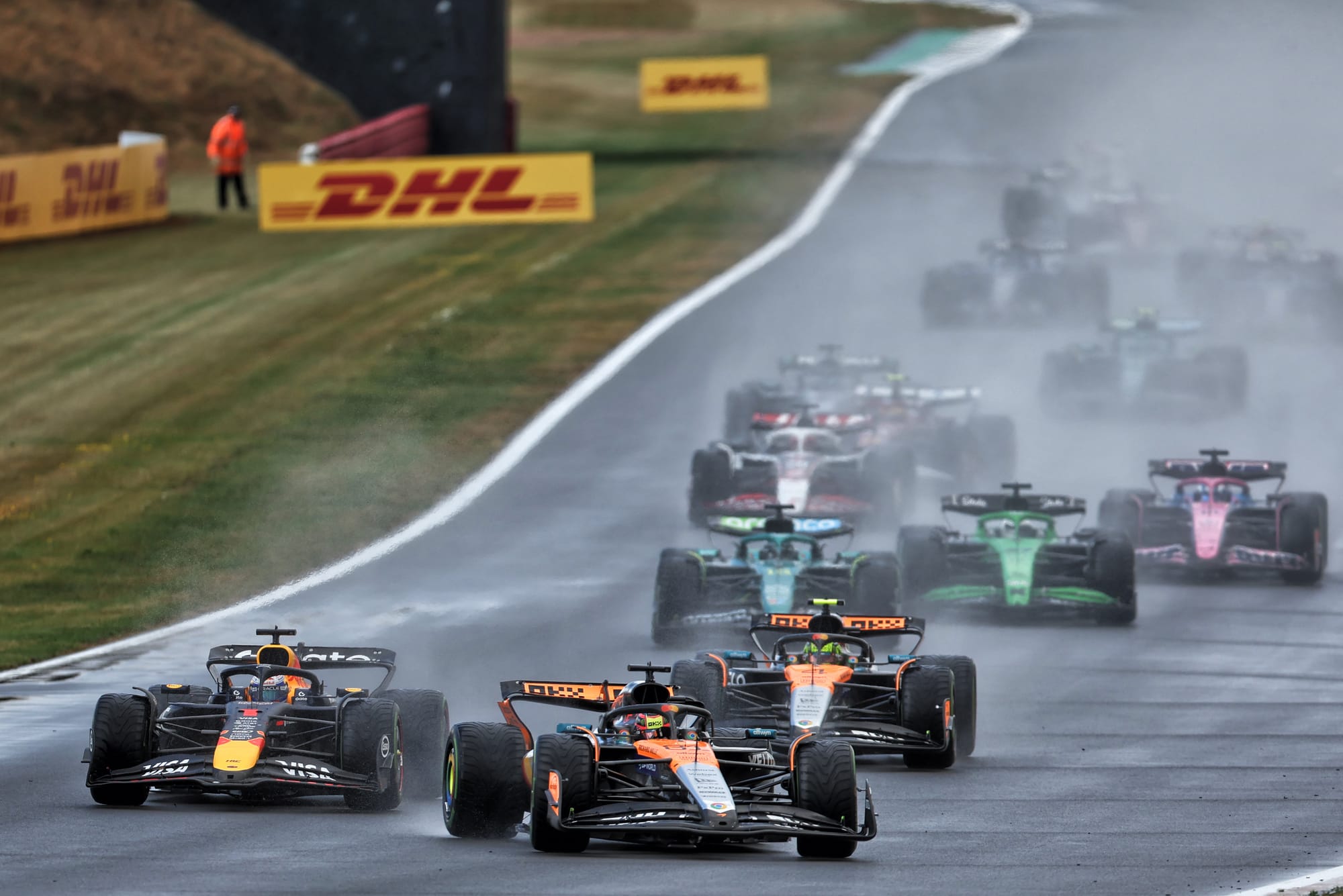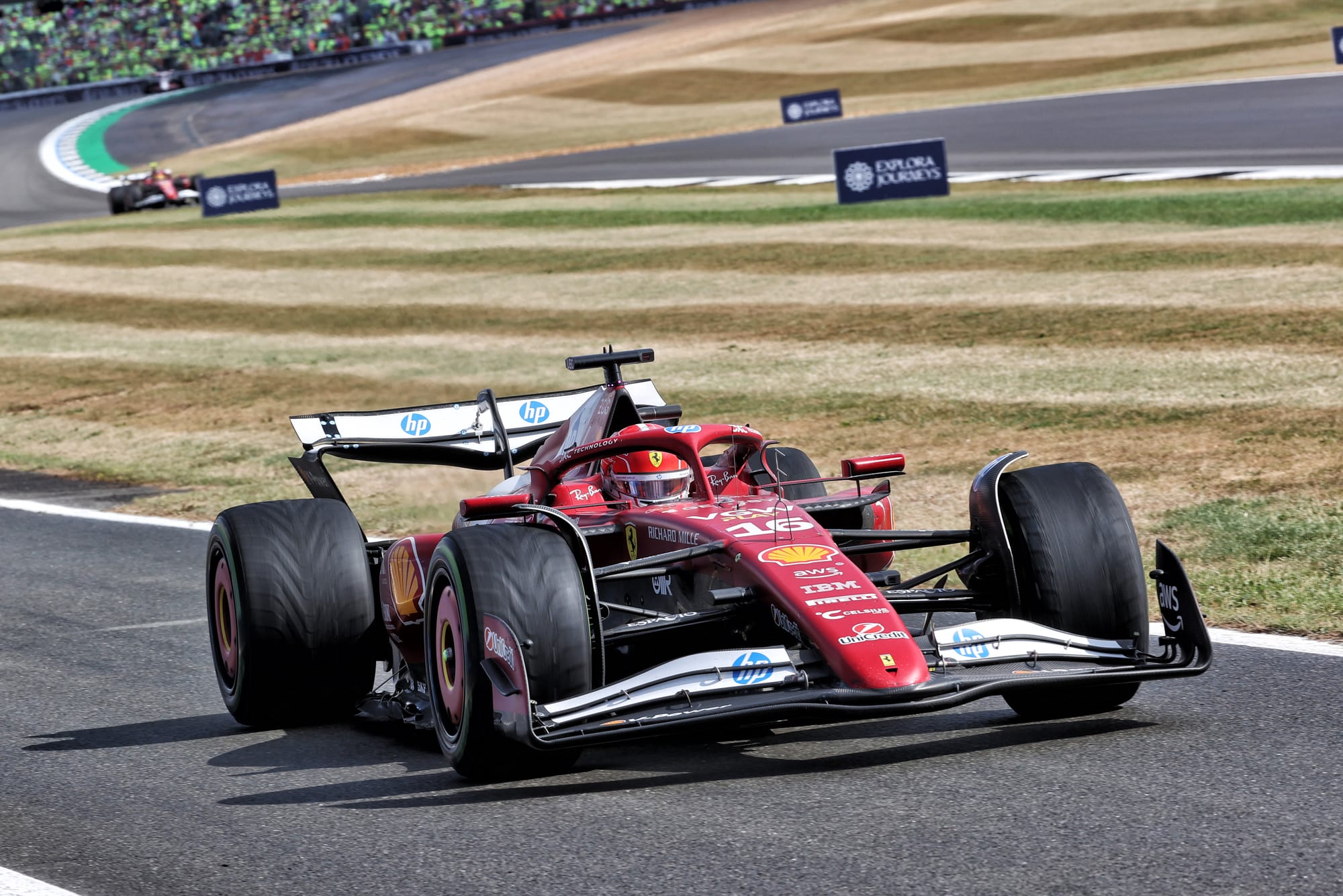Lando Norris emerged grinning and exhilarated at the achievement: victory in his home grand prix in front of the fans, his family and friends.
He'd said coming into the British GP weekend he'd trade all his other Formula 1 wins for a victory here and here he did it. "It wasn't my best-fought win," he admitted, in reference to how he inherited the lead as a result of the 10-second penalty team-mate Oscar Piastri had to take at his pitstop for "erratic braking" on a safety car restart, "but it's the best in terms of what it means."
Rewinding events to the decisive moment of this race being Norris's rather than Piastri's, you can go further back even than the restart incident (in which Piastri's hard braking caught Max Verstappen by surprise).
If we go back to lap 11 as Piastri, Norris and Verstappen all pitted for fresh intermediates as the rain intensified, Norris's left-front was slow to come off. Which meant he lost the second place he'd just taken from Verstappen on track, having pounced when the Red Bull had got wildly out of shape through Chapel.
Had it been Norris rather than Verstappen in second, the restart choreography would probably have been quite different. Without the incident and penalty, Piastri would've been favourite for the win; he had track position and pace. Norris's sticking wheel nut might just have won him the race...
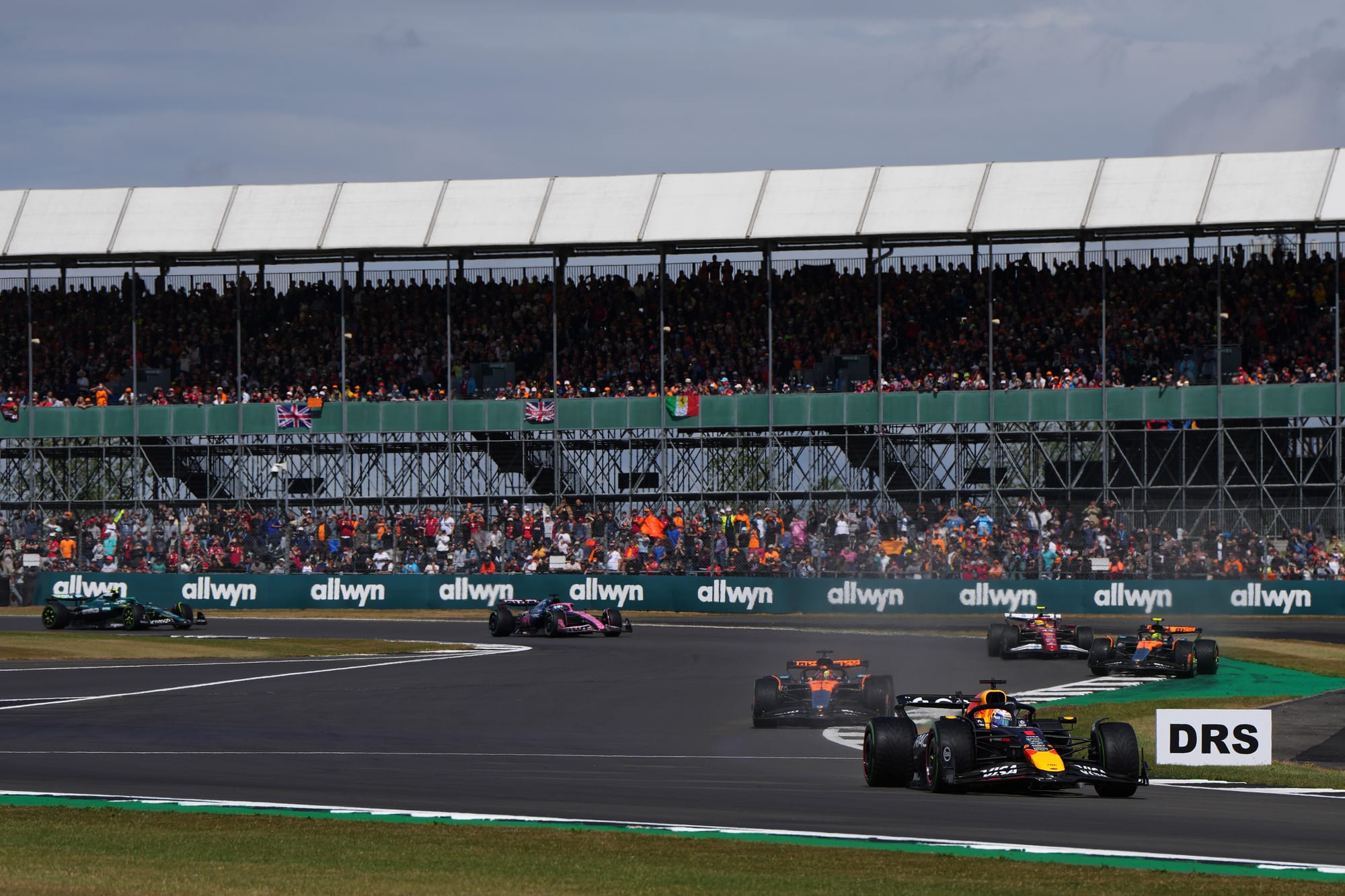
You might go back further even than that. Most obviously, you might recall how the rain was way heavier than forecast and rendered Verstappen's skinny wing choice disastrous. It helped get him pole, but on the cold wet track of race day it rendered the car a tyre-shredding, gripless, ill-balanced mess. In the drier phases it was reasonable, lost a load of time and many positions during the wettest phase, then gradually became respectable once more as the track dried again.
It's quite feasible that in the dry, from pole, Verstappen - with a car that rocketed down the straights - would have been impossible to beat. Even by the grippier McLarens. Instead he was a distant fifth after many adventures, outnumbered only by his complaints about how impossible the car was to drive.
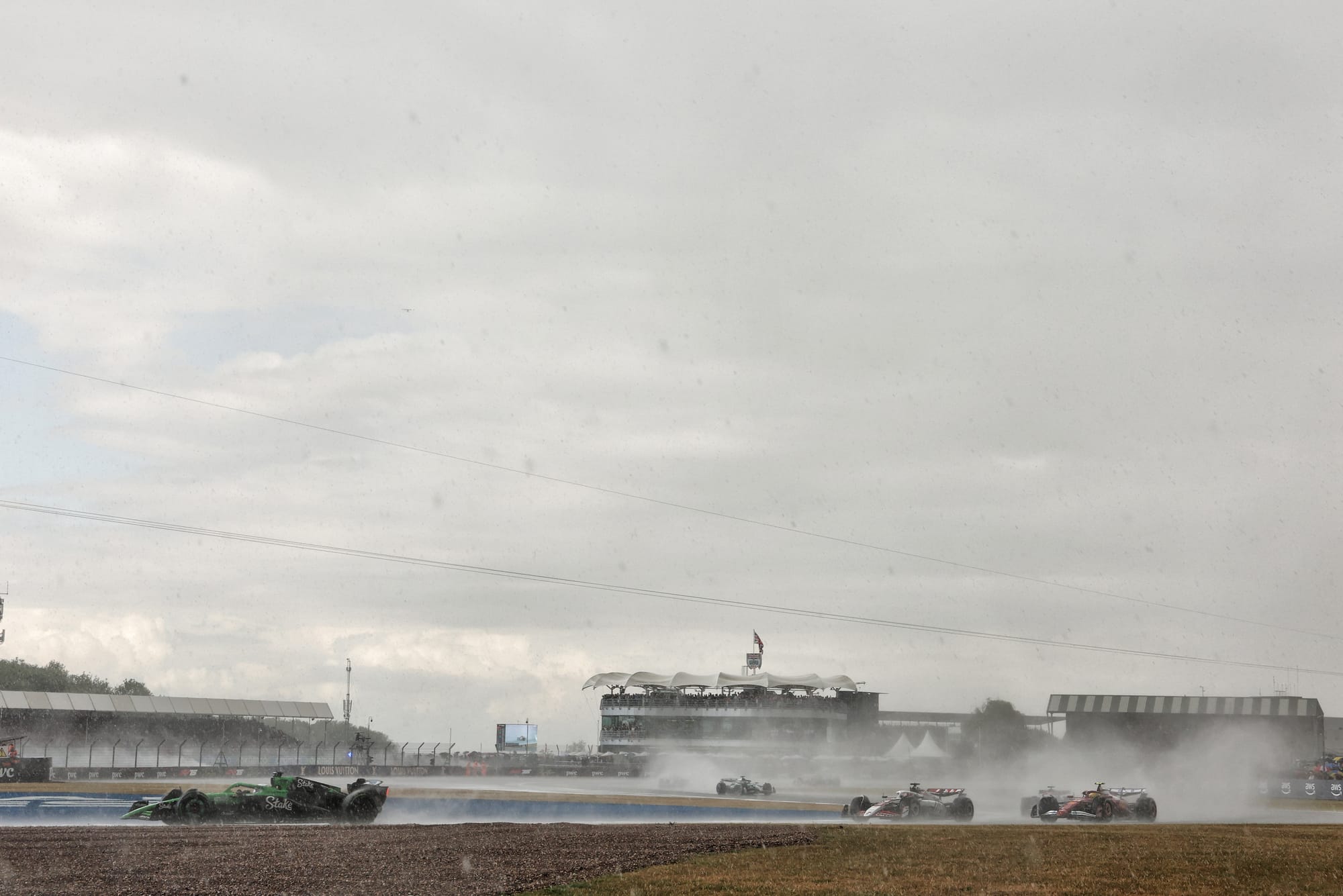
The first safety car came on lap 14 simply because of how the track was becoming waterlogged enough that there was a danger of the planks bottoming out the cars. The rain eased, the cars cleared the worst of the water and the safety car put out its lights late in the lap, after exiting Chapel onto Hangar Straight. Accordingly, Piastri braked to get the required gap to accelerate into and in the iffy visibility of the spray he caused some concertina chaos behind, cars fanning out in all directions to avoid each other.
There was no incident there, but later in the lap Isack Hadjar was shocked to see the rear end of Kimi Antonelli's Mercedes looming out of nowhere as he approached Copse at high speed. Hadjar's resulting heavy accident brought out the safety car less than a minute after it had come in.
Four laps later it prepared to come in again, this time extinguishing its lights even later in the lap as the cars headed down Hangar. Piastri braked from 135mph down to 32mph, just as Verstappen was asking his engineer Gianpiero Lambiase about restart modes and switch changes. That perhaps intensified his surprise - and made Piastri's slowing look excessive, as the Red Bull flew past before tucking back behind. That’s where Piastri lost the grand prix.
A couple of seconds later, Verstappen - his inters by now horribly worn through that skinny Monza-style rear wing - spun through Stowe and dropped eight places. McLaren was now running 1-2 but with Piastri's penalty soon to be confirmed.
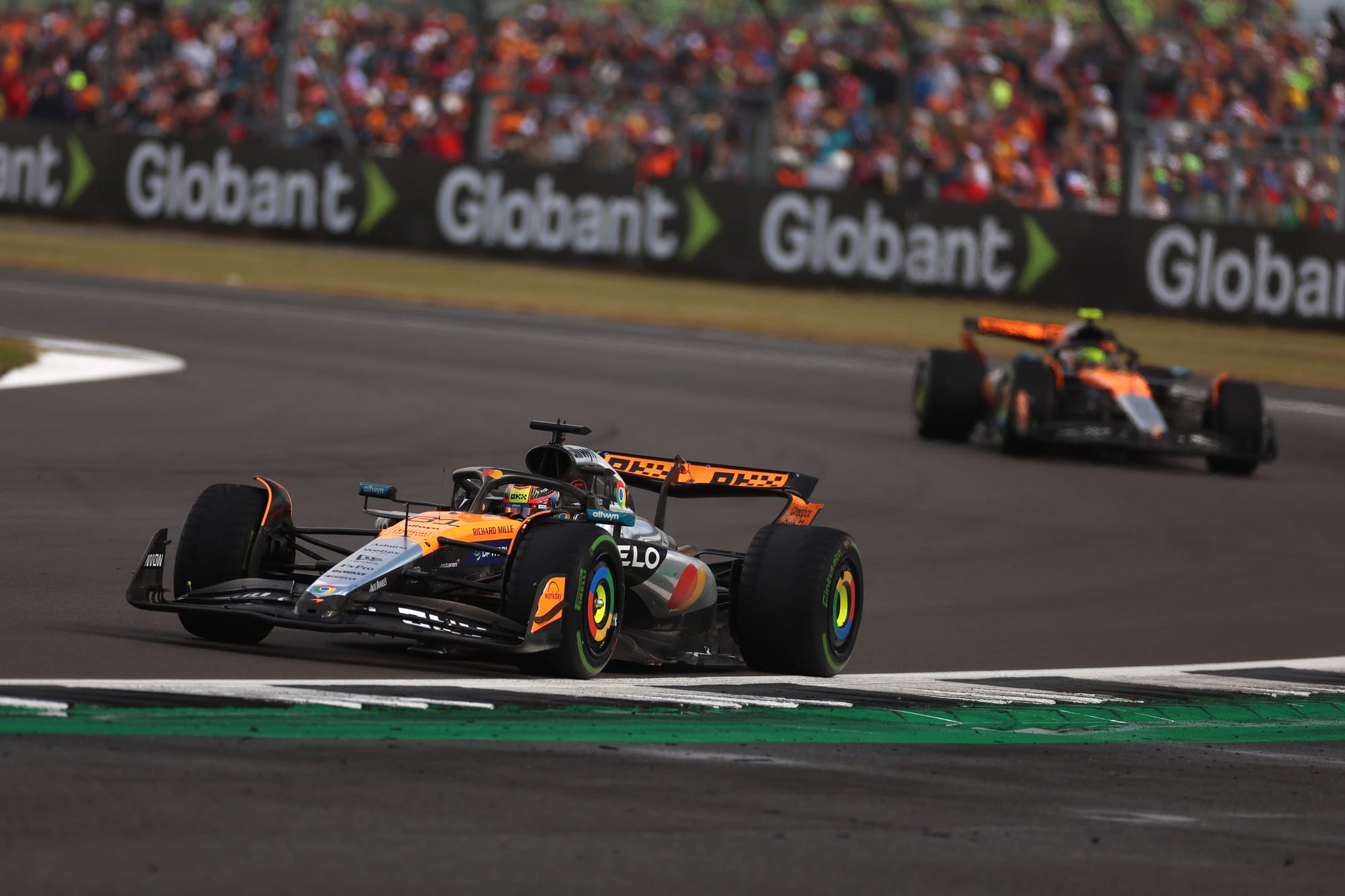
With Ferrari, Mercedes and Verstappen all seriously compromised by their cars' behaviour in the wet and some disastrous strategy calls, McLaren's race day advantage was as big as any seen this year. Once they were running 1-2, it was then just about Piastri getting his gap over third place out to over 31s, so that he could pit, take his penalty, change tyres and still emerge second.
Hopefully that would dovetail with the switch to slicks as the track gradually dried out. That's indeed how it worked out, with Norris assuming a five-second lead which he maintained to the end.
Lance Stroll - taking advantage of two great calls by Aston Martin in the early laps which bought him several laps of superior tyre grip in clear air - had emerged in third after the safety cars but was being closely pursued and gradually caught by Nico Hulkenberg's Sauber, which passed midway through the second stint, with Lewis Hamilton's Ferrari also surging by.
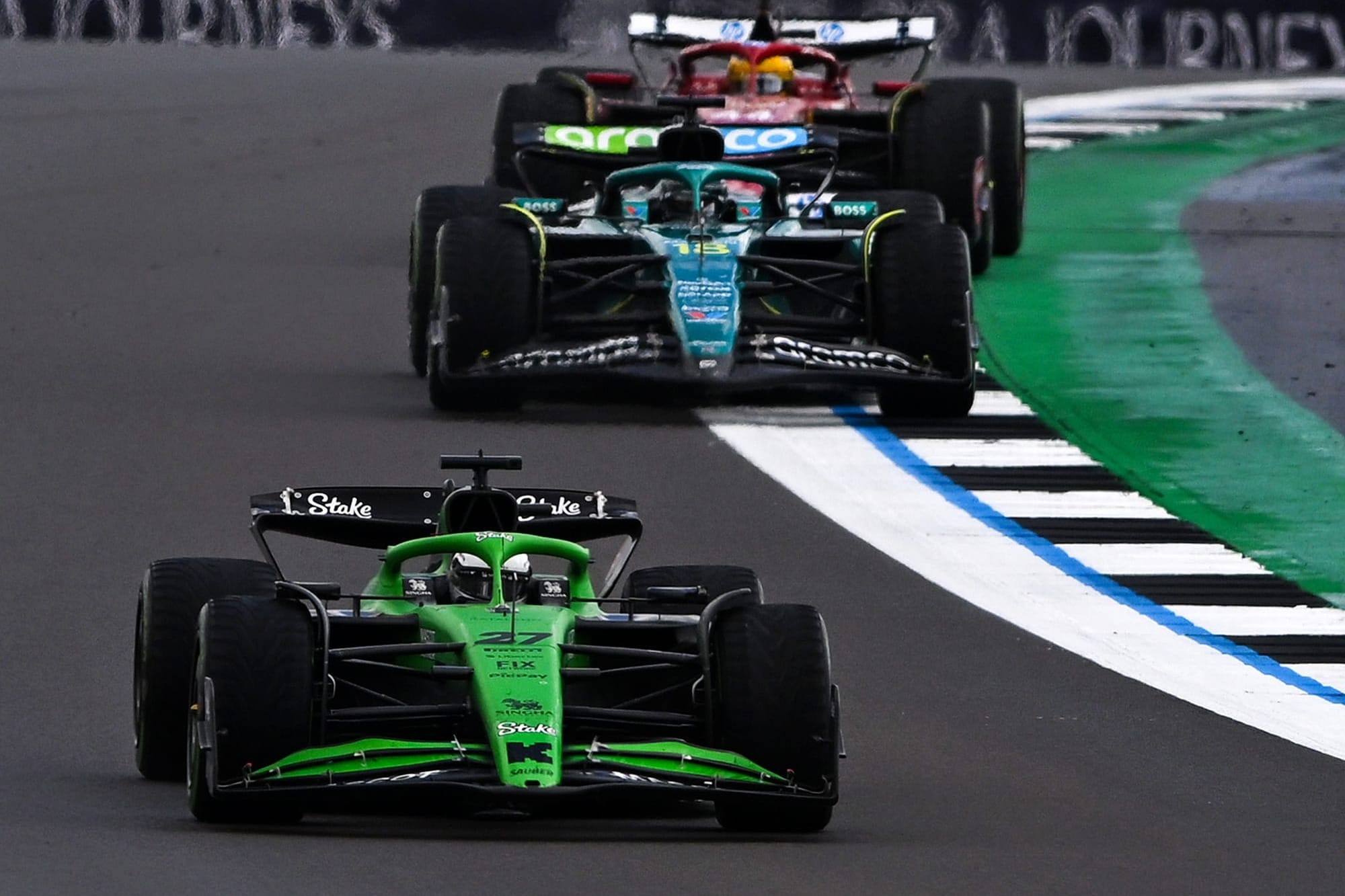
Hamilton's race had been an action-packed one, briefly passing Norris for third on the opening lap, falling back with significant tyre wear, dicing with Pierre Gasly's Alpine, being passed by George Russell's Mercedes but retaliating in audacious fashion, getting by Russell and Esteban Ocon in one move into Village, pitting early onto slicks after passing Stroll, going off on the outlap, losing eight seconds but, on the soft tyre, catching Hulkenberg, only then to have the softs surrender.
So Hulkenberg's first ever F1 podium was secured, richly deserved and thoroughly applauded by almost everyone in the paddock.
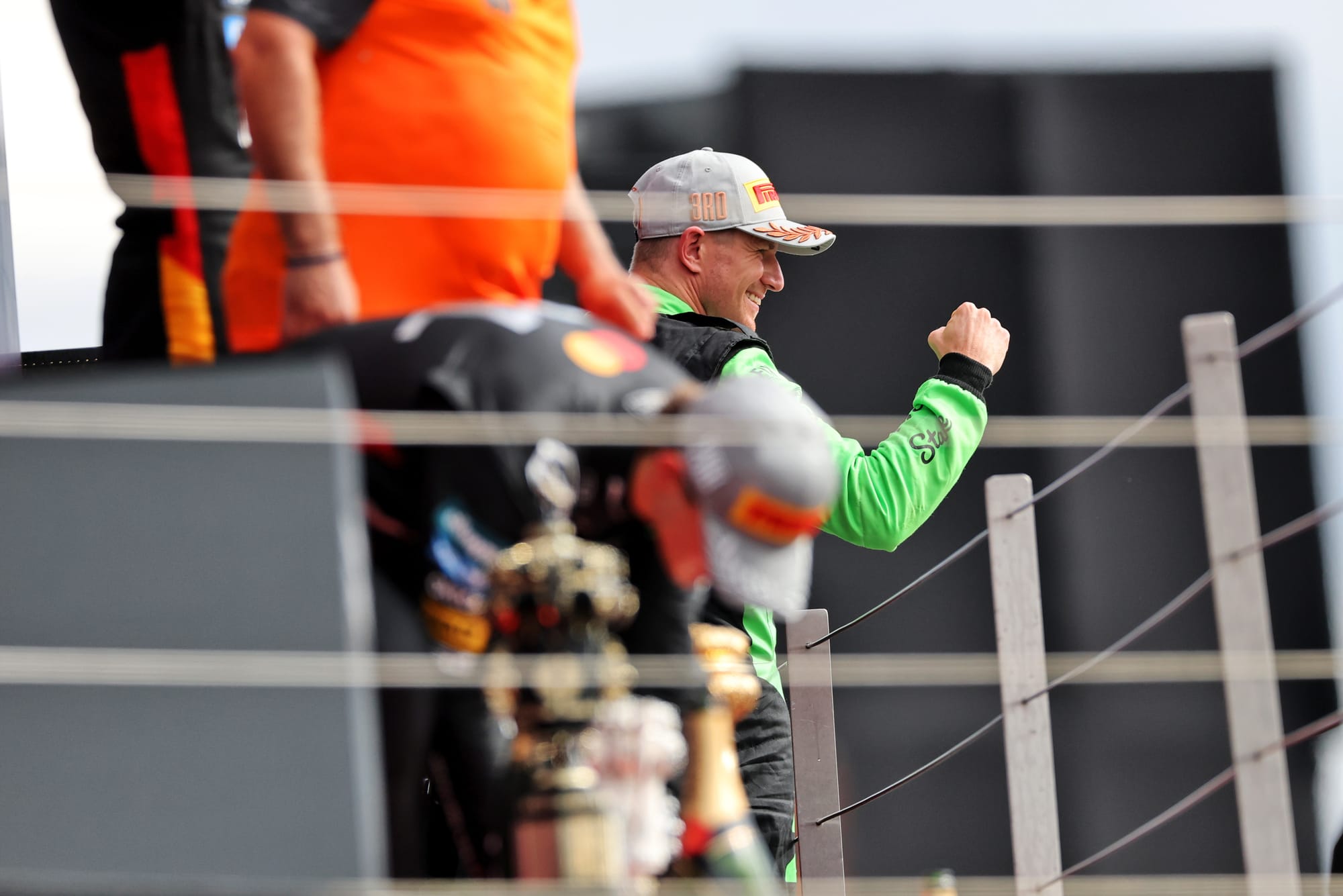
Fourth place was better than the Ferrari deserved on the day; reluctant to turn in to slow corners and snappy through fast ones. "I can't even express to you how hard it is," said Hamilton afterwards. "It's not a car that likes those conditions. But there’s lots of data to take from this and I’d like to sit down with the people that are designing the car for next year because there's elements of this car that can go into the following year."
Leclerc was absolutely nowhere with it. "And I mean nowhere," as he emphasised of his 14th place, with more trips across runoff areas, grass and gravel traps than any other car, as well as a spin into Carlos Sainz's Williams. The low ride height set-up which worked so well on the car in the dry was a disaster on race day, exacerbated by his premature move onto slicks after the safety car formation lap.
Verstappen got by Stroll for fifth with two laps to go, the Aston having used up its soft tyre grip by then - falling victim also to Gasly on the last lap.
Fernando Alonso's more conventional strategy couldn't overcome the Aston Martin's indifferent wet weather pace and he was passed for eighth on the last lap by Alex Albon's Williams, with Russell's Mercedes - after two disastrous strategy calls on a day when making the right ones was as much luck as judgement - taking the final point.
There was an element of luck in Norris's victory too. But he almost certainly wasn't too concerned about that.


